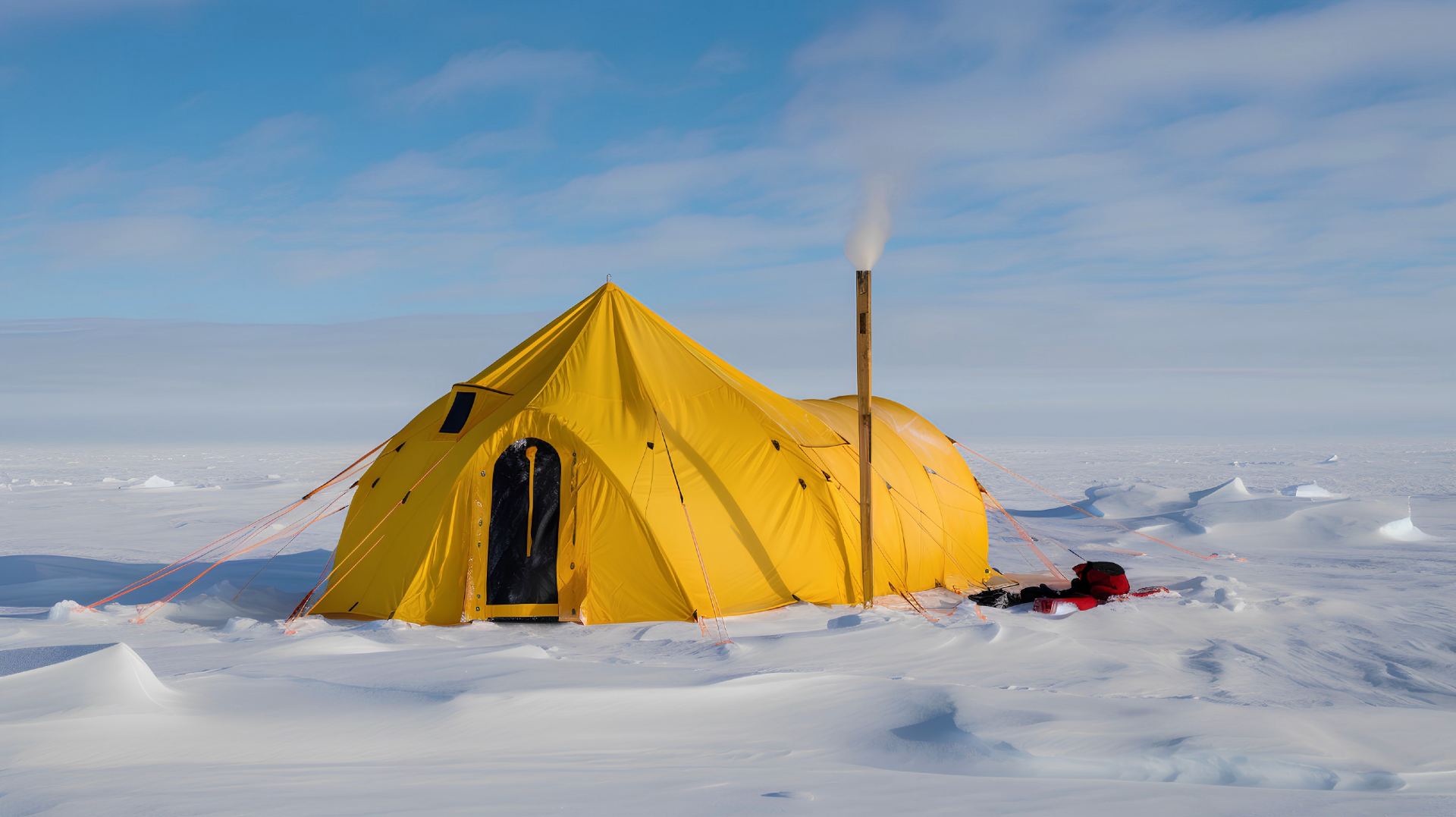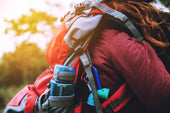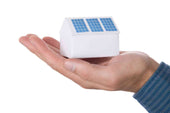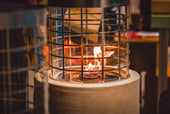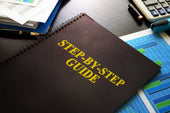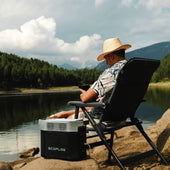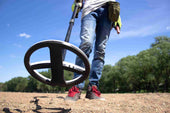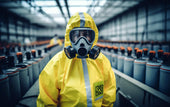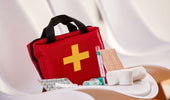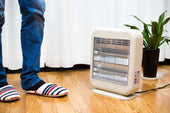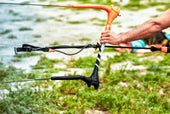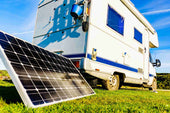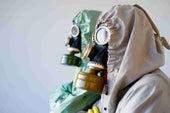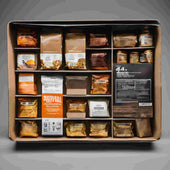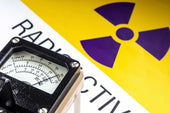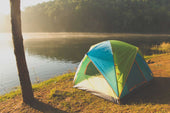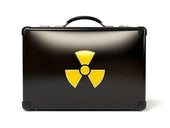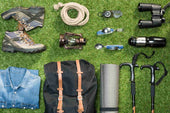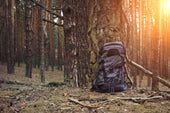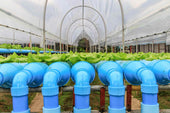Camping isn't just for hot summer days filled with sweat and insects! You may camp during winter, but it might make you shiver. Camping in subfreezing conditions is often reserved for mountaineers and residents of northern countries like Canada, Alaska, and Norway.
Nowadays, more people explore the wild during the off-season to avoid the crowds. But it's still bitterly chilly, so some people become much more resourceful and use hot tents!
What is a hot tent?
A hot tent is an alternative to using gas or electricity to heat a tent during the winter. Instead, you use a stove's natural fire. The stove acts as a little kitchen where you may prepare food and heat water for coffee, tea, and chocolate while keeping you warm.
Hot tent camping requires a fire-resistant tent. Treated canvas is the most popular material due to its resistance to melting.
However, specific artificial hot tents can sustain high temperatures. The fabric of a standard tent might need to be more vital to withstand the heat, so converting one is risky.

Hot tents require a full roof, chimney, stove jack, or ventilation pipe. A retractable floor would be ideal for use in the warmer months. (The floor is removed in the winter to prevent it from freezing to the ground.)
Hot tents are usually large. A large amount of space must separate the stove from the tent's walls, and there must also be a space between the individuals, their equipment, and the wall behind the stove. As a result, the tent's large form occasionally demands a minimum two-person setup.
Finally, be cautious of condensation. With some lightweight synthetic designs, the challenge can be tricky. However, those with condensation problems frequently do better when it rains. Because they are frequently used in snowy climates, heated tents' waterproofing could be better.
How warm is a hot tent?
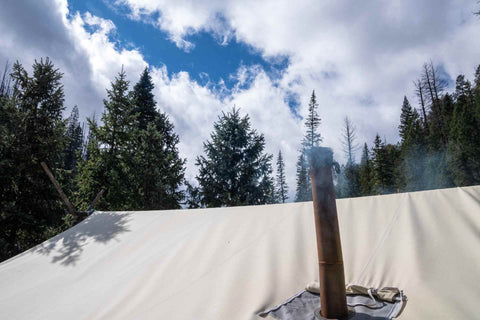
When describing this type of camping, the word "hot" is not an exaggeration.
The type of stove, the tent, and the weather affect how hot it gets inside a tent. Even in freezing weather, a hot tent can become very warm.
Many reach an average inside temperature of 60–70 degrees in below-freezing conditions. Hot tents, however, can get heated, exceeding 80 degrees above freezing. Many people consequently end up dozing on top of their sleeping bags.
Standing up makes you feel the hottest in a tent because heat rises. You can manage the temperature inside the tent by learning how to use the damper and draft control. To move the warm air around the tent, you can also use Mr. Heater's hunting buddy heater, which is a portable propane heater.
Another factor that aids with temperature control is the kind of wood you burn. Compared to softwoods like pine, hardwoods like oak and maple often emit greater heat and burn much longer. Additionally, wood burns hotter on average the drier it is.
Sleeping in a Hot Tent
Just because your tent has a heater doesn't imply you can stay warm by sleeping in summer or three-season clothing.
You can sleep in a hot tent if the stove fire is out.
Your gear and sleeping setups should be chosen following the weather and temperature forecast during your journey.

Here is the least that you'll need:
A sleeping bag for the winter
Insulated air mattress
Something for a groundsheet
Wear warm clothes to sleep.
Wood for the following day
You can leave the stove on all night, but someone must get up roughly every two hours throughout the night to tend to the various firewood again.
The alternative is to heat it shortly before bed, dress warmly, and let it cool overnight.
Although hot tents include a chimney or stove jack and are fire-resistant, there is still a chance of fire or carbon monoxide poisoning. Although they are uncommon, hot tent accidents do happen.
Staying Safe While Hot Tenting
Even though hot tent camping is enjoyable, you must take safety precautions. Here are some pointers for safely hot tenting:
Avoid Carbon Monoxide and Smoke Poisoning
Stay awake while the wood stoves are burning
Make Sure Your Hot Tents Are Ventilated
Don't Put A Ground Sheet Under The Stove
Keep an eye on the stove at all times.
Check the hot tent's pipe seals.
- It wasn't correctly attached.
- The connection got damaged during setup, takedown, or transit.
Never burn coal inside of a hot tent.
Never camp in a hot tent before a First Burn.
Avoid setting up a hot tent near awake bears.
Are there any drawbacks?
The drawbacks of a hot tent are its weight, price, and setup time. If you want to take your setup far, you'll need a sled or snowmobile. A regular canvas tent weighs 15 to 20 pounds and packs down to approximately 20" x 24" x 10, while a medium-sized wood stove is about 19" x 12" x 12" and weighs just over 20 lbs unless you want to make two trips.
Canvas tents and stoves are sold separately, so you can select the best set-up. If properly maintained, a basic 8' by 10' canvas tent with a wood fire will cost around $1,100 and provide years, if not a lifetime, of luxury camping.
Oh, and make sure to confirm the location's fire restrictions.
Hot Tent Packing List
You're already familiar with the pop-up tent, poles, basic tool set, pots, pans, and other camping equipment that travel with you on your summer excursions, but for your winter getaway, you'll need more simply because staying warm will call for it.
Furthermore, wearing summer clothing, which is only suitable for more agreeable weather, is prohibited. Start by gathering the following essentials before adding your comforts of home:
-
Tent with fireproofing agents
-
Portable box stove
-
Venting mechanism
-
At least 100 feet of rope
-
Cooking gear (cast iron is the best) and utensils
-
Essential tools like saws and axes
-
Fire-starting materials
-
First aid kit
-
LED lamps
-
Fold-down sleeping cots
-
Winter-grade sleeping bags
-
Ground pads if you don't bring cots
-
Ingredients to make meals over your fire
-
A proper wardrobe with multiple changes per camper in case garments get wet.
Final Thoughts
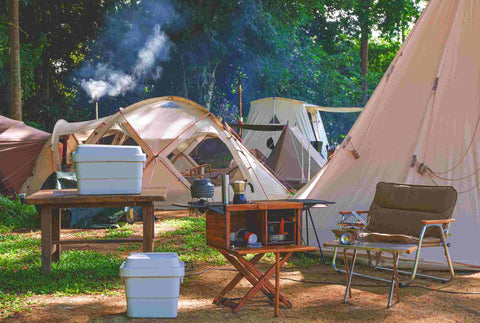
Although it might be more complex and enjoyable than summer camping, hot tent camping is still worth considering. What could be nicer than a warm night of snowfalls and the sound of stones and wood rubbing together?
Your tent must be comfortable no matter how chilly it is outside. Therefore, heating your tent should be one of your top objectives when planning a camping vacation in a low-temperature area.
All you have to do is choose a solution that enables you to appreciate the wonder of snowy winter nights while remaining cozy and comfortable at home. Whichever way, camping is fun!

